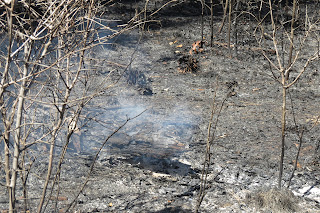Chesser Island Homestead, Okefenokee National Wildlife Refuge
Saturday April 8, 2017 More sun and mild temperatures.
All three of us made our way back to the Refuge in the morning. We decided to explore the Chesser Island Homestead, an interpreted 600 acre farm on a dry island in the Okefenokee where the Chesser family eked out a living in the late 1800s, through raising livestock, harvesting the sap of the Slash Pines (turpentine), raising sugar cane, hunting and smoking meat/fish, and working in the Refuge after it was created in the latter part of the Great Depression (1937). Tom Chesser stayed until 1958 with the blessing of the Refuge, only leaving to follow wife Iva to Folkston, where she found the proximity to services somewhat more amenable.
Local history is the subject of several websites, including some Wikipedia entries. If interested, read on after luxuriating in this blog!:

Arriving at the Homestead, we were fortunate to find volunteer Gordon
Saager, who provided us with a very informative tour. Gordon knows the Chessers, some of whom also volunteer at the Okefenokee National Wildlife Refuge(NWR). Our tour gave us his personal insights, and we shared a lot of our farming knowledge. We learned much more about southern farming from Gordon, for example, the process for tapping the Slash Pines reminded me very much of our Sugar Maple tapping for maple syrup. Above is a photo of Gordon, Jan and Winston in front of the Chesser home. Below, is a full house photo with the same three posing! Note the white sandy soil. Growing anything on this sandy substrate was a challenge.
Thanks Gordon, for this photo of your three guests. Below as the sign says, you see the water well technology....a hollow log.
We then toured the out buildings, amidst Spanish Moss festooned oaks. Note that the local lumber trade focused on Cypress and Pines. Cypress has many of the same qualities of our local White Cedar (Arbor Vitae) in Eastern Ontario, except that Cypress trees are giants compared to Cedars.
Fence Lizard , Sceloporus undulates (male) above and below
Florida Red-bellied Cooter, Pseudemys nelsoni, which obviously ranges into the Okefenokee in Georgia. Notwithstanding the name, I had never seen this turtle in Florida.
Thanks to the staff at Okefenokee NWR for putting me into contact with Gordon.



















































